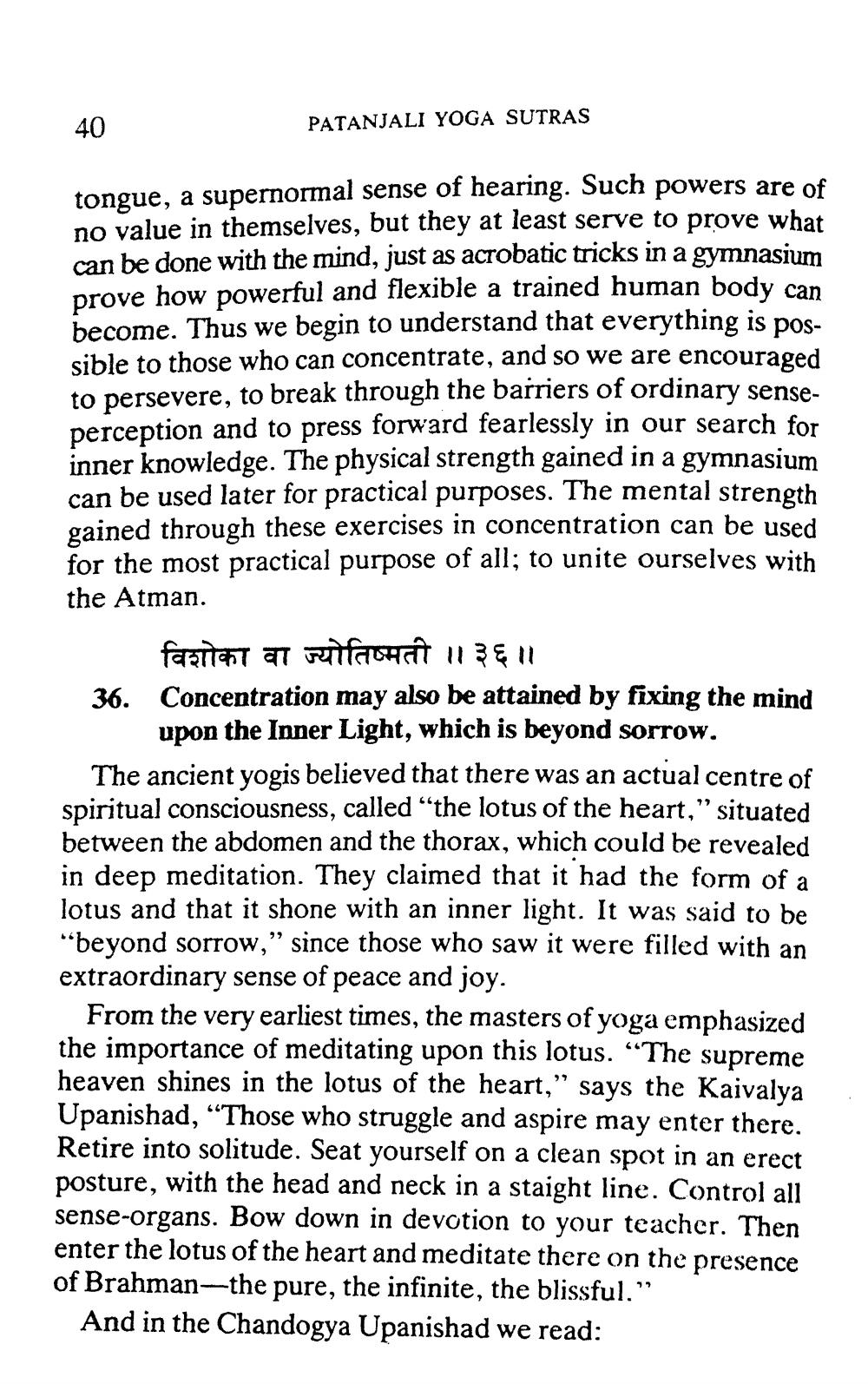________________
40
PATANJALI YOGA SUTRAS
tongue, a supernormal sense of hearing. Such powers are of no value in themselves, but they at least serve to prove what can be done with the mind, just as acrobatic tricks in a gymnasium prove how powerful and flexible a trained human body can become. Thus we begin to understand that everything is possible to those who can concentrate, and so we are encouraged to persevere, to break through the barriers of ordinary senseperception and to press forward fearlessly in our search for inner knowledge. The physical strength gained in a gymnasium can be used later for practical purposes. The mental strength gained through these exercises in concentration can be used for the most practical purpose of all; to unite ourselves with the Atman.
विशोका वा ज्योतिष्मती ॥३६॥ 36. Concentration may also be attained by fixing the mind
upon the Inner Light, which is beyond sorrow. The ancient yogis believed that there was an actual centre of spiritual consciousness, called "the lotus of the heart," situated between the abdomen and the thorax, which could be revealed in deep meditation. They claimed that it had the form of a lotus and that it shone with an inner light. It was said to be “beyond sorrow,” since those who saw it were filled with an extraordinary sense of peace and joy.
From the very earliest times, the masters of yoga emphasized the importance of meditating upon this lotus. “The supreme heaven shines in the lotus of the heart,” says the Kaivalya Upanishad, “Those who struggle and aspire may enter there. Retire into solitude. Seat yourself on a clean spot in an erect posture, with the head and neck in a staight line. Control all sense-organs. Bow down in devotion to your teacher. Then enter the lotus of the heart and meditate there on the presence of Brahman-the pure, the infinite, the blissful.”
And in the Chandogya Upanishad we read:




